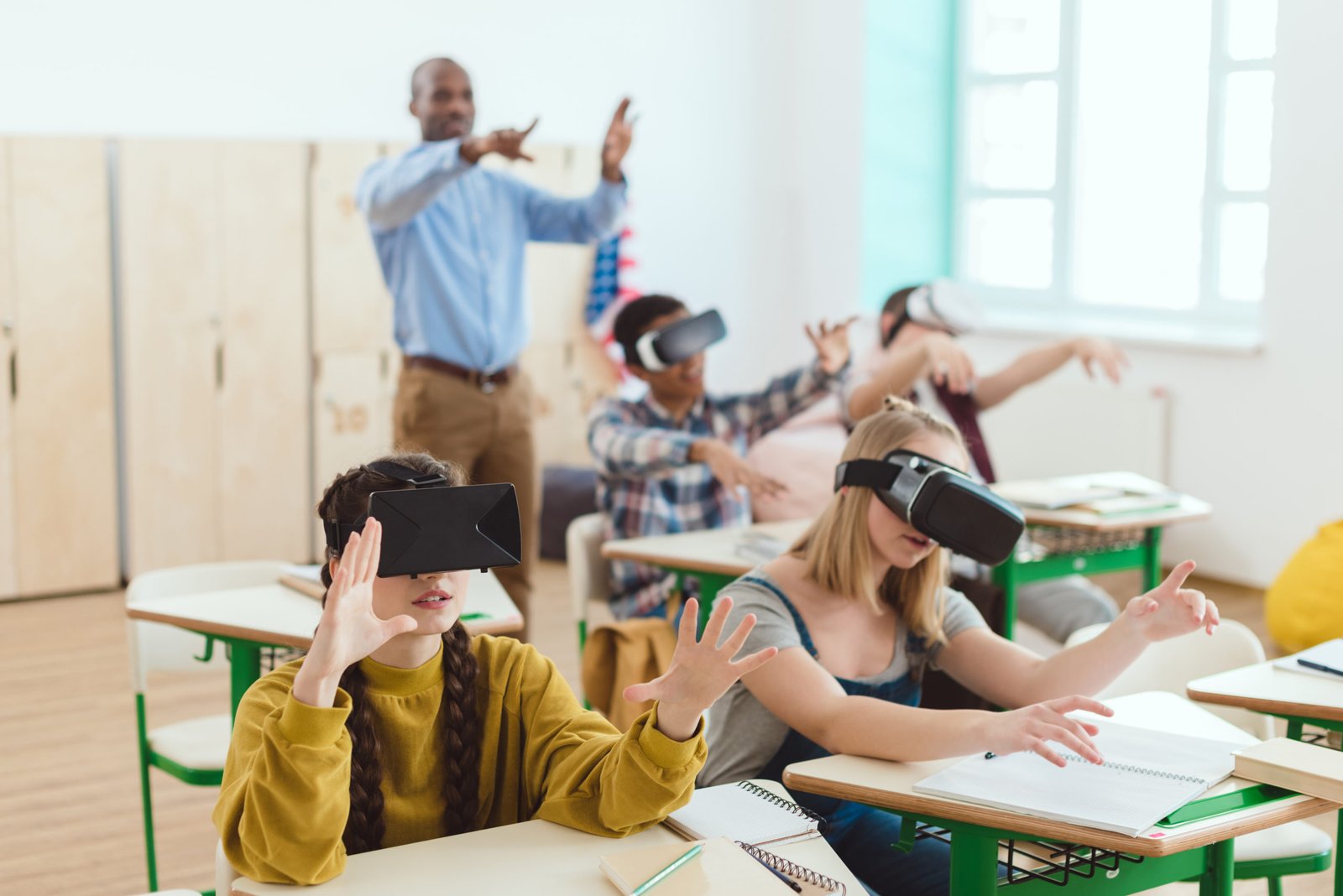Introduction to Augmented Reality In The Classroom
Augmented Reality (AR) in the classroom revolutionizes traditional education by integrating digital elements into the physical environment. Through AR technology, students can access interactive 3D models, animations, and additional information, enhancing their learning experience. This immersive approach cultivates engagement, fostering a deeper understanding of complex concepts.
Teachers can utilize AR to create dynamic lessons, making abstract ideas tangible and promoting collaborative learning. AR cultivates curiosity and critical thinking as students interact with virtual elements overlaid on the real world. AR transforms education into a dynamic, interactive, and innovative space, preparing students for a technologically advanced future.

The Power of AR in Education
Augmented Reality (AR) in education empowers immersive learning experiences by overlaying digital content to the physical globe. This dynamic integration enhances engagement, fosters profound understanding, and cultivates critical thinking skills. AR transforms traditional classrooms into interactive hubs, bridging the hole between academic concepts and real-world applications for students.
Applications of AR in the Classroom
- Interactive Learning Materials: Augmented Reality in the classroom transforms textbooks and study materials into interactive experiences. For instance, a biology book could come to life, showing a 3D model of the human heart beating in real time.
- Enhanced Field Trips: With Augmented Reality in the classroom, field trips are no longer confined to the physical boundaries of a location. Students can explore historical sites, distant galaxies, or microscopic worlds from their classroom.
- Language Learning: AR aids in language education by providing interactive, contextual learning. Visual cues and immersive environments can enhance the understanding of new languages.
- STEM Education: AR can visualize complex concepts in subjects like science, technology, engineering, and mathematics, making them easier to grasp.
Benefits of Augmented Reality in Education
- Engagement and Motivation: Augmented Reality in education boosts engagement and motivation by providing interactive, immersive experiences. Students are captivated by dynamic content, fostering a deeper connection with learning materials and promoting active participation.
- Improved Retention: Augmented Reality in education enhances retention by offering multisensory, interactive learning experiences. Combining visual and hands-on elements helps solidify concepts, improving student information retention.
- Accessibility: Augmented Reality in education promotes accessibility by catering to diverse learning styles. It accommodates visual, auditory, and kinesthetic preferences, ensuring a more inclusive and practical educational experience for all students.

Challenges and Considerations
Implementing Augmented Reality in classrooms poses challenges such as limited access to AR devices, infrastructure requirements, and teacher training. Privacy concerns, content quality, and the need for equitable access also warrant consideration. Overcoming these hurdles is crucial for the successful integration of AR in education.
Conclusion to Augmented Reality In The Classroom
Augmented Reality in the classroom emerges as a transformative force, revolutionizing the educational landscape. Despite challenges, AR’s potential to enhance engagement, motivation, and retention is undeniable. By fostering interactive, immersive learning experiences, it caters to diverse learning styles, making education more accessible and inclusive.
As technology advances and implementation hurdles are addressed, AR stands poised to redefine traditional teaching paradigms, creating dynamic, future-ready learning environments. Integrating AR into education requires continued collaboration, innovation, and a commitment to overcoming challenges, ultimately paving the way for a more engaging and practical educational experience.
FAQs for Augmented Reality In The Classroom
How does AR benefit students?
AR benefits students by making learning more engaging and interactive, aiding in better understanding and retaining information.
Can AR be used in all subjects?
Yes, AR can be applied across various subjects, including science, history, language learning, and more, to visualize and interact with complex concepts.
What are the challenges of implementing AR in schools?
Challenges include proper technology infrastructure, educator training, and addressing privacy and security concerns.
Is AR accessible to students with special needs?
AR can be particularly beneficial for students with special needs, offering customizable and adaptable learning experiences.
Rate our article (Augmented Reality In The Classroom: A Beginner's Guide)How much do you like article?





